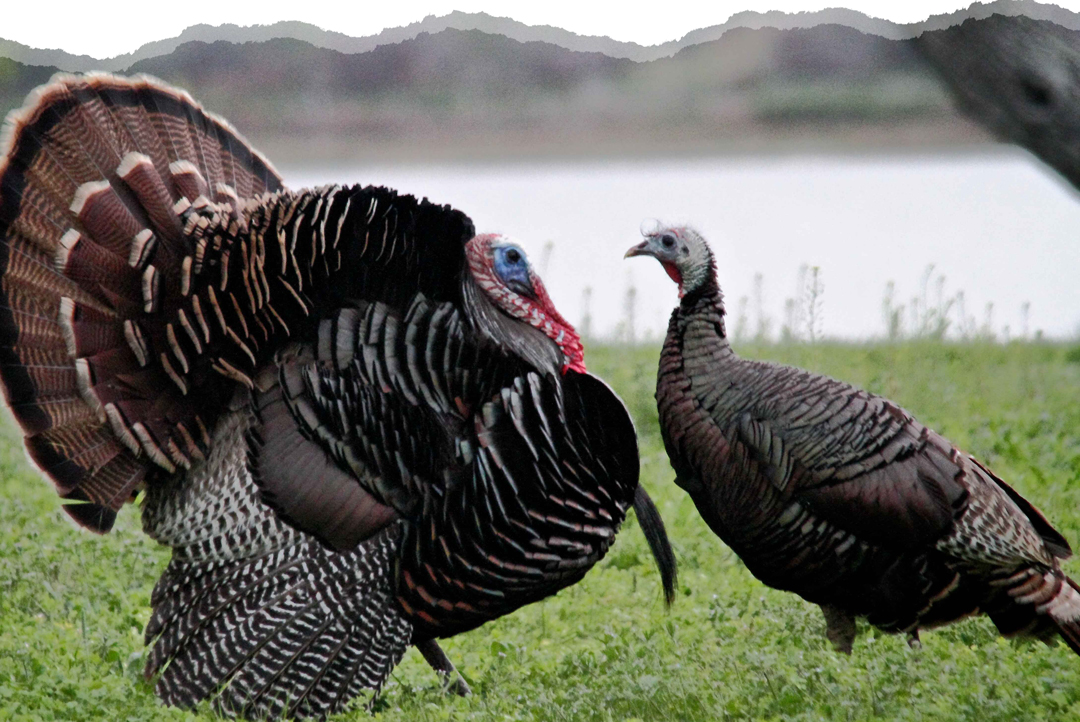Where do Rio Grande Turkeys live?
Rio Grande Turkeys have a steadfast presence within the United States, being found within the following states: western California, Colorado, Hawaii, Kansas, New Mexico, Oklahoma, Oregon, Texas, and Utah. These specific regions of the country have presented an environment for which the Rio Grande turkey has the opportunity to thrive for a lifetime (up to 10 years); with the desired habitat consisting of both wooded and open fields with grassy areas and a steady water supply, the Rio Grande turkey establishes itself. Tall oak trees and other trees of the like, such as elm and cottonwood, provide wide canopies for the turkeys to roost in, with roosts mainly in the summertime and the wintertime; their diet consists of grasses, insects, nuts, and berries as well. Rio Grande turkeys are sociable, often foraging together.

What additional names are Rio Grande Turkeys called?
Furthermore, adult male turkeys are referred to as “gobblers,” females are called “hens,” adolescent males are known as “toms,” and, lastly, the turkeys under 4 weeks of age are recognized as “poults.” The gobblers can weigh up to 20 pounds and are 40 inches tall, while the hens can weigh up to 11 pounds and stand at 30 inches tall. In addition, gobblers will employ their distinctive gobble to attract the attention of the hens, displaying their ornate ornamentation; gobblers will also strut in front of the hens and expand their 5,000 to 6,000 iridescent feathers, assuming a recognizable profile. The feathers of the gobbler take on an emerald green and coppery brown color that coats their predominantly reddish/dark brown feathers; a hen has similar coloring, though the hues are much more subtle and not as apparent as the gobbler.

When does mating season begin for the Rio Grande Turkey?
In the springtime, the turkeys will mate, with nesting occurring in the late springtime and through July and the poults hatching in May or June. A hen will lay an egg a day and, in total, 10 to 12 eggs. The nest of the hen consists of a shallow, bowl-shaped area within the ground, covered with gathered foliage, surrounded with tall grasses for protection, and with a nearby water source. Once the poults hatch after a 28-day incubation, they form a brood, eating the insects they find on the Earth’s floor, leaving the nest with the hen as soon as 12 to 24 hours after hatching. In 3 weeks, poults have learned basic skills of how to survive through mimicking their mother’s behavior and through recognizing different calls, such as alarm calls; poults are even able to roost in small trees, which heightens their chances of survival in the wild. Roosting occurs often in the summer and in the winter, allowing the turkeys to avoid potential threats; common enemies consist of raccoons, foxes, wild pigs, hawks, and more. With a formed hierarchy, Rio Grande Turkeys know their place among one another as they form their groups amongst their particular home ranges.

